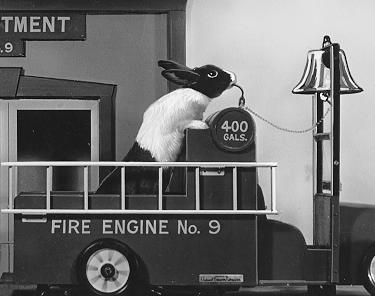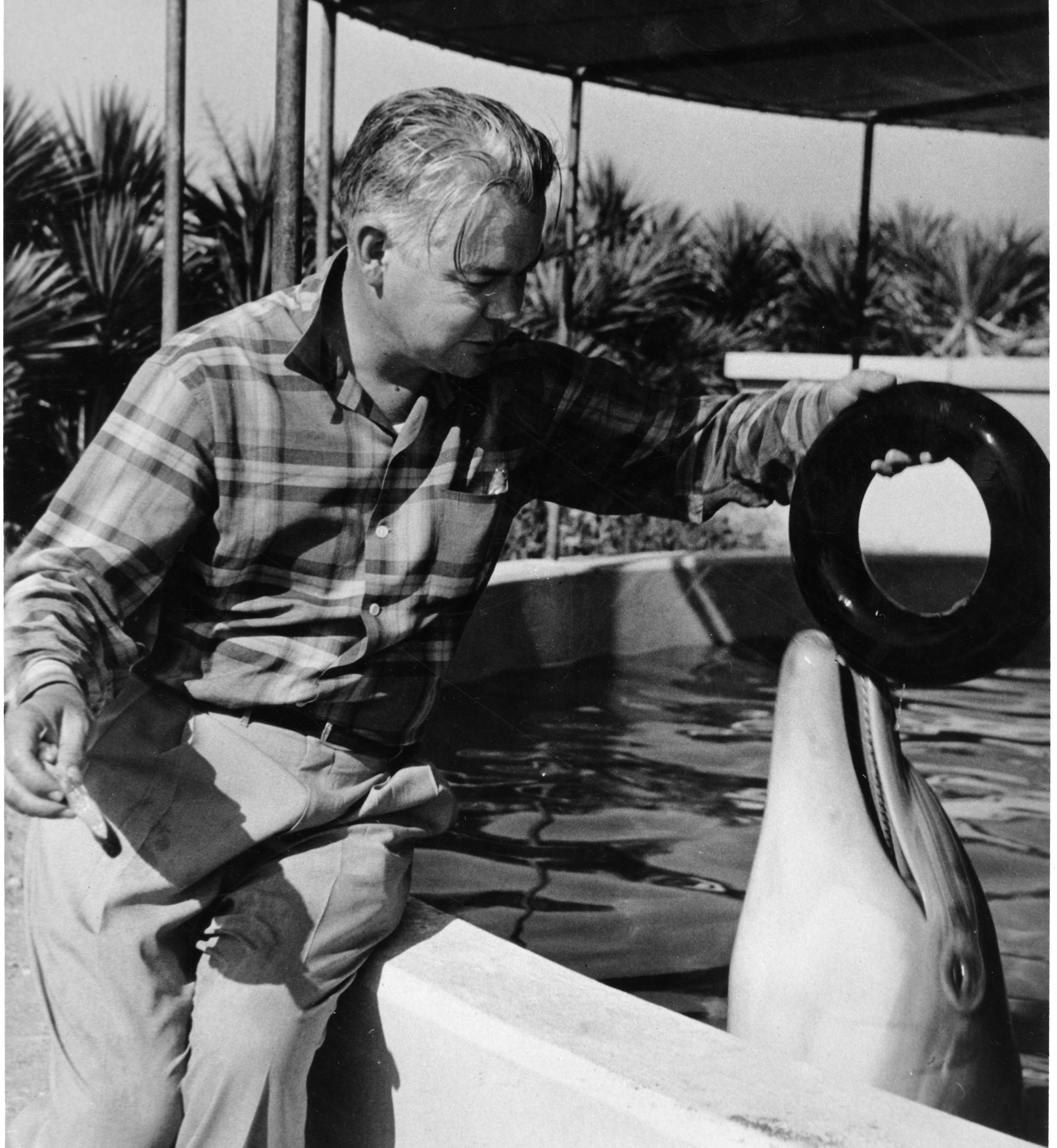Continuous and Partial Schedules of Reinforcement
Schedules of Reinforcement:
Schedules of Reinforcement
Continuous Reinforcement Schedule
Partial (intermittent) Reinforcement Schedule
Fixed Ratio (FR) Schedule
Variable Ratio (VR) Schedule
Fixed Interval (FI) Schedule
Variable Interval (VI) Schedule
| Click on the thumbnail below to enlarge. | Schedules of Reinforcement | ||||||||
| | Schedules of reinforcement are the rules that determine how often an organism is reinforced for a particular behavior. The particular pattern of reinforcement has an impact on the pattern of responding by the animal. A schedule of reinforcement is either continuous or partial. The Fire Chief Rabbit to the left was not reinforced every time it pulled the lever that "operated" the fire truck. In other words, the rabbit was reinforced on a partial or intermittent schedule. There are four basic partial schedules of reinforcement. These different schedules are based on reinforcing the behavior as a function of (a) the number of responses that have occurred or (b) the length of time since the last reinforcer was available. The four partial schedules are:
|
| Click on the thumbnail below to enlarge. | Continuous Reinforcement Schedule |
| | The continuous schedule of reinforcement involves the occurrence of a reinforcer every single time that a desired behavior is emitted. Behaviors are learned quickly with a continuous schedule of reinforcement and the schedule is simple to use. As a rule of thumb, it usually helps to reinforce the animal every time it does the behavior when it is learning the behavior. Later, when the behavior is well established, the trainer can switch to a partial or intermittent schedule. If Keller Breland (left) reinforces the dolphin every time the dolphin touches the ring with its nose, then Keller is using a continuous schedule. |
| Click on the thumbnail below to enlarge. | Partial (Intermittent) Reinforcement Schedule |
| | n With a partial (intermittent) schedule, only some of the instances of behavior are reinforced, not every instance. Behaviors are shaped and learned more slowly with a partial schedule of reinforcement (compared to a continuous schedule). However, behavior reinforced under a partial schedule is more resistant to extinction. Partial schedules of reinforcement are based on either a time interval passing before the next availability of a reinforcer or it is based on how many target behaviors have occurred before the next instance of the behavior is reinforced. Schedules based on how many responses have occurred are referred to as ratio schedules and can be either fixed-ratio or variable-ratio schedules. Schedules based on elapsed time are referred to as interval schedules and can be either fixed-interval or variable-interval schedules. |
| Click on the thumbnail below to enlarge. | Fixed Ratio (FR) Schedule |
| | Ratio schedules involve reinforcement after a certain number of responses have been emitted. The fixed ratio schedule involves using a constant number of responses. For example, in the Buck Bunny commercial, if the bunny is always reinforced after moving exactly five coins into the bank, this would be an FR 5 schedule. |
| Click on the thumbnail below to enlarge. | Variable Ratio (VR) Schedule |
| | Ratio schedules involve reinforcement after an average number of responses have occurred. For example, the Fire Chief Rabbit's lever pulling, which made it appear that it was operating the fire truck, was reinforced on a variable-ratio schedule. Reinforcement occurred after an average of 3 pulls on the lever. Sometimes the reinforcer was delivered after 2 pulls, sometimes after 4 pulls, sometimes after 3 pulls, etc. If the "average" was about every 3 pulls, this would be a VR 3 schedule. Variable ratio schedules maintain high and steady rates of the desired behavior, and the behavior is very resistant to extinction. |
| Fixed Interval (FI) Schedule | |
| Interval schedules involve reinforcement of a desired behavior after an interval of time has passed. In a fixed interval schedule, the interval of time is always the same. The Brelands and the Baileys did not use this type of schedule in their work. However, if Buck Bunny had been on an FI 30-second schedule, then the bunny would be reinforced the first time that a coin was placed in the bank after a 30-second interval had passed. | |
| Variable Interval (VI) Schedule | |
| Interval schedules involve reinforcement of a target behavior after an interval of time has passed. In a variable interval schedule, the interval of time is not always the same but centers around some average. If Buck Bunny is on a VI 30 seconds schedule, then the bunny would be reinforced the first time that a coin is placed in the bank after, on average, a 30-second interval has passed. Sometimes the bunny would be reinforced after the first coin drop after 25 seconds, sometimes after 35 seconds, etc. After an animal learns the schedule, the rate of behavior tends to be more steady than with a fixed interval schedule. Once again, the Brelands and the Baileys did not use this type of schedule. |
napoleonbuffive94.blogspot.com
Source: https://www3.uca.edu/iqzoo/Learning%20Principles/lammers/All_schedules.htm




0 Response to "Continuous and Partial Schedules of Reinforcement"
Postar um comentário